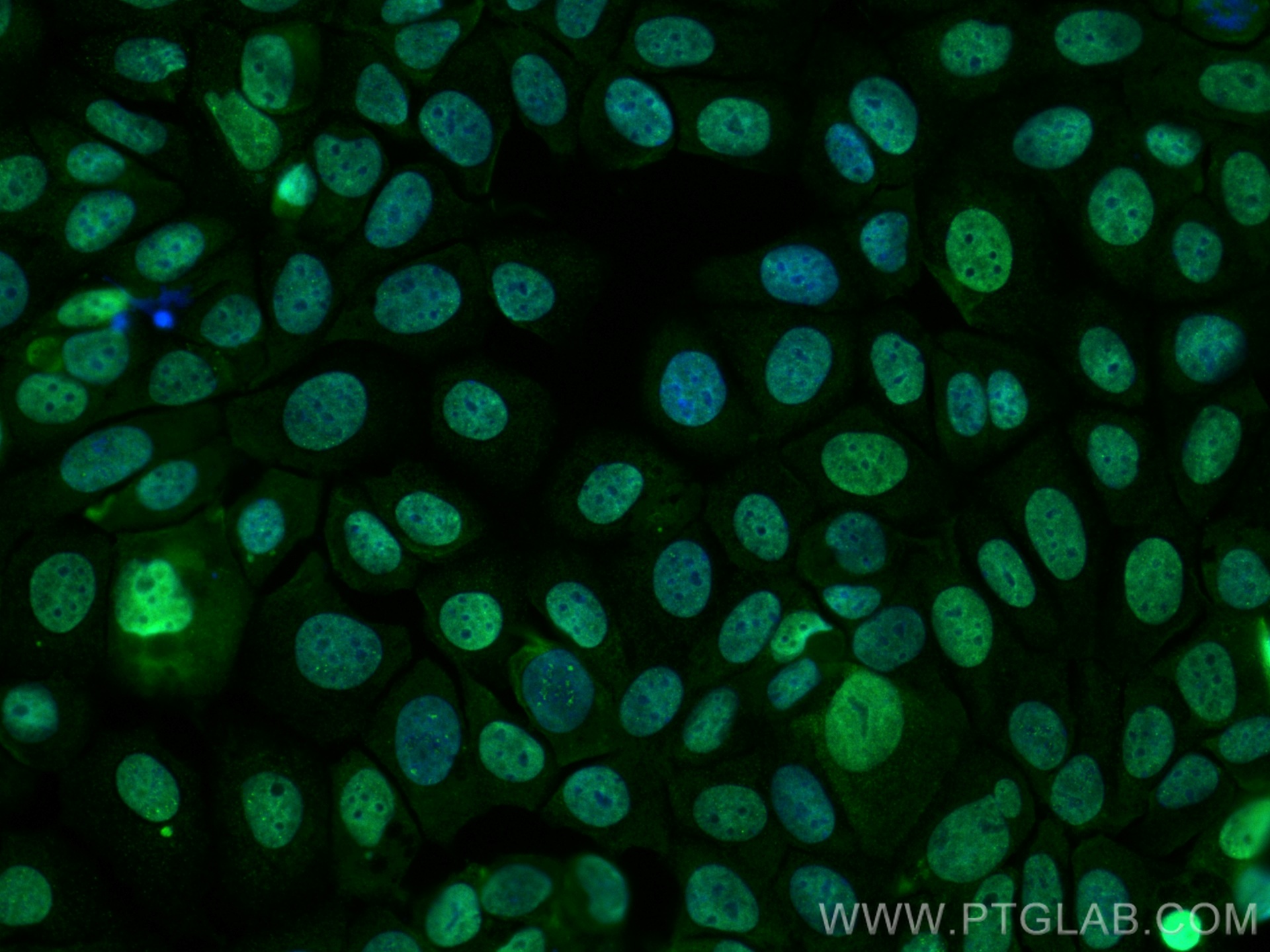验证数据展示
经过测试的应用
| Positive IF/ICC detected in | MCF-7 cells |
推荐稀释比
| 应用 | 推荐稀释比 |
|---|---|
| Immunofluorescence (IF)/ICC | IF/ICC : 1:50-1:500 |
| It is recommended that this reagent should be titrated in each testing system to obtain optimal results. | |
| Sample-dependent, Check data in validation data gallery. | |
产品信息
CL488-66216 targets TLE1 in IF/ICC applications and shows reactivity with human samples.
| 经测试应用 | IF/ICC Application Description |
| 经测试反应性 | human |
| 免疫原 | TLE1 fusion protein Ag21327 种属同源性预测 |
| 宿主/亚型 | Mouse / IgG2b |
| 抗体类别 | Monoclonal |
| 产品类型 | Antibody |
| 全称 | transducin-like enhancer of split 1 (E(sp1) homolog, Drosophila) |
| 别名 | E(Sp1) homolog, ESG, ESG1, GRG1, TLE1 |
| 计算分子量 | 83 kDa |
| 观测分子量 | 85-95 kDa |
| GenBank蛋白编号 | BC010100 |
| 基因名称 | TLE1 |
| Gene ID (NCBI) | 7088 |
| RRID | AB_3084222 |
| 偶联类型 | CoraLite® Plus 488 Fluorescent Dye |
| 最大激发/发射波长 | 493 nm / 522 nm |
| 形式 | Liquid |
| 纯化方式 | Protein A purification |
| UNIPROT ID | Q04724 |
| 储存缓冲液 | PBS with 50% glycerol, 0.05% Proclin300, 0.5% BSA , pH 7.3 |
| 储存条件 | Store at -20°C. Avoid exposure to light. Stable for one year after shipment. Aliquoting is unnecessary for -20oC storage. |
背景介绍
TLE1 (Transducin-like enhancer protein 1) is a transcriptional corepressor and binds to a number of transcription factors. It can inhibit NF-kappa-B-regulated gene expression and the transcriptional activation mediated by FOXA2, and by CTNNB1 and TCF family members in Wnt signaling. The effects of full-length TLE family members may be modulated by association with dominant-negative AES (PMID: 10660609). TLE1 is highly expressed in postnatal brain (PMID: 29758293; 27852056).
实验方案
| Product Specific Protocols | |
|---|---|
| IF protocol for CL Plus 488 TLE1 antibody CL488-66216 | Download protocol |
| Standard Protocols | |
|---|---|
| Click here to view our Standard Protocols |
